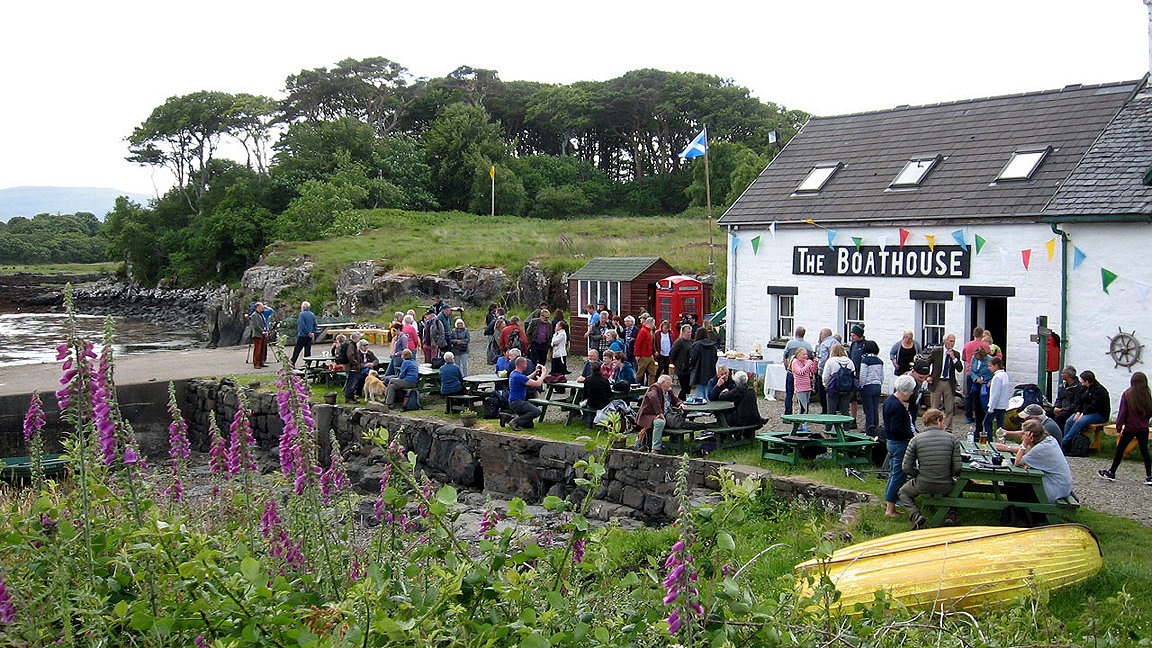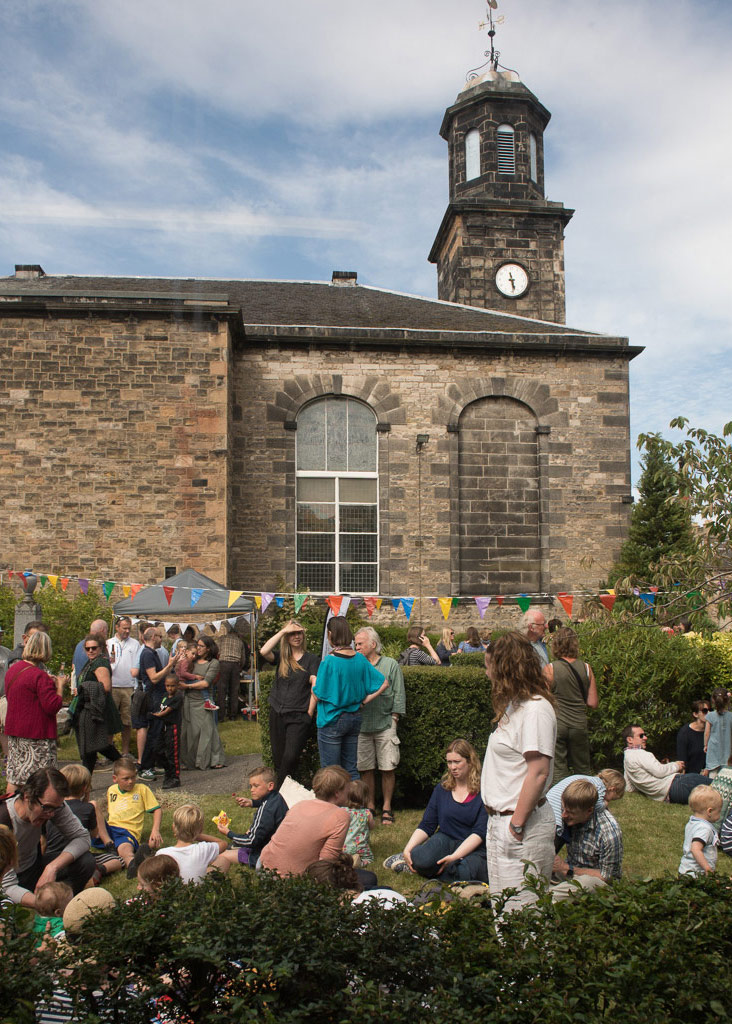
The recent agreement for the community purchase of some 2,000ha at Langholm Moor in the south of Scotland from Buccleuch Estates for £3.8m follows 2 earlier community buy-outs from the same landowner.
But community ownership of large estates in Scotland is not a new concept. The 7,000ha Glendale Estate on Skye has been owned by the local community for more than a century, and the 28,000ha Stornoway Estate on the Isle of Lewis will soon mark 100 years of community ownership.
However, until the recent deals in southern Scotland, community ownership of significant landholdings was concentrated largely in the Highlands and Islands. That is now changing.
In recent years, community ownership in Scotland has become as much about urban buildings or small parcels of land as rural estates. The Scottish government moved away from its '1 million acres by 2020' target for 40,000ha of land to be in community ownership by 2020 as it has now served its purpose of focusing attention on the empowerment agenda and moving community ownership into the mainstream.
In fact, community ownership has always been about more than just hectares, as its record in rural and urban communities shows. The Community Empowerment (Scotland) Act 2015 frames ownership or control of land or buildings as a key element in effective community-led regeneration or development.
As attention in Scotland now turns to recovery and renewal after COVID-19, the case for community ownership in building resilience has never been stronger. There's widespread recognition that it is not an end in itself but a means of offering wider benefits for the economy, the environment and local communities.
Since 2015, when the 1 million acre target was announced, 593 assets have been acquired by communities in Scotland, with positive, wide-ranging impacts.
- generating income for community activity
- increasing community confidence and cohesion
- encouraging economic regeneration
- creating more local employment opportunities and affordable housing.
"Community ownership in Scotland has become as much about urban buildings or small parcels of land as rural estates"
Health and well-being
Beyond the physical asset base, community landownership can also be a catalyst for providing wider community services that underpin health and well-being. In so doing, it can also help reverse population decline, which has been a particular challenge in Scotland's more remote and rural areas.
For example, in the 10 years since the West Harris Trust took ownership of 3 crofting estates from the Scottish government, the local population has increased by 20%. Against a decline of 50% over the previous 50 years, this is a significant turnaround in a fragile area.
Since acquiring the land, the trust has built Talla na Mara, a community facility including a restaurant and new business space that now supports 20 jobs. It has also built new houses, made plots available for housing, and developed revenue-generating renewable energy installations.
In a more urban context, Midsteeple Quarter in Dumfries is breathing life back into the high street through its acquisition and redevelopment of town centre properties, creating a mixed living, working, social and business space. Meanwhile, the creation of an all-weather football pitch at Linwood in Renfrewshire is supporting health and well-being, as well as empowering the community to acquire more land to meet its needs.
Internationally, there is a wide variety of forms of community tenure, many of which are associated with municipal governance that operates at a much more local scale than in the UK. For instance, community land trusts in England are a well-established form of ownership, focusing on housing provision; they also offer useful lessons for governance models elsewhere.
Having reviewed existing right-to-buy mechanisms for the Scottish government in 2018, recommending how best to enable community ownership, the Scottish Land Commission also identified that the challenge was ensuring that community landownership becomes a normal, realistic option across the nation. The commission said that community ownership needs to become a routine option for communities that is planned and proactive rather than simply reacting when assets are put up for sale. It can then be an integral part of local place planning, which were enacted in the Planning (Scotland) Act 2019, with communities identifying the land and assets that they need.
That also means community ownership is about more than simply relying on the reactive legislative rights to buy set out in the 2015 Act or the Land Reform (Scotland) Acts 2003 and 2016.
Most recent community buy-outs in Scotland have not been adversarial and reliant on legislation, but negotiated between communities and landowners. This culture shift means communities can be more planned in identifying the land and assets they need to realise their ambitions, acquisitions can be more targeted, and the process of transfer can be constructive for all parties.

Langholm Moor
The Langholm Moor acquisition demonstrates well how such an approach can work. Having decided to sell the land, Buccleuch Estates consulted with the community before marketing to find out whether there was an interest in either the ownership or use of the land. A strong vision for community acquisition meant a market sale was put on hold for direct negotiations, leading to an agreement to acquire 2,000ha.
It is an approach that the Commission fully supports through its Land Rights and Responsibilities Protocol, which include specific protocols on community engagement and negotiated transfers. As this approach works for all parties, the Commission recommends that it should become increasingly routine for land transactions.
The Langholm Moor buy-out also illustrates another important aspect of community ownership: the synergy between resilient communities, environmental regeneration and climate action. The Langholm Initiative led the community buy-out with the aim of creating a nature reserve, restoring ancient peatlands and reforesting part of the land, drawing on a range of funding streams to combat climate change. The community believes that ownership will also help to create new jobs in ecotourism and rural industries, stimulating repopulation.
Fundraising models
But it's not easy. For this community and many others, raising the finance for acquisition is one of the biggest challenges. The Langholm Initiative is currently buying 2,100ha, around half the area it originally hoped to purchase. Even so, it took an impressive fundraising campaign to meet the £3.8m target before the deadline to take up a £1m grant from the government-financed Scottish Land Fund. The £3.8m was raised through a collective effort of volunteers, individuals, groups, agencies, the public and trusts.
- Scottish Land Fund
- South of Scotland Enterprise
- The Carman Family Foundation
- The Bently Foundation
- John Muir Trust
- Garfield Weston Foundation
This fund has been vital to the growth in community ownership across Scotland and, with continued commitment from the Scottish government, it remains key to financing community acquisitions. Perhaps not surprisingly it is in high demand, and its £10m annual allocation could be spent many times over. So the Scottish government has asked the commission to look at how that funding can be complemented by other sources of finance in a more strategic way, to support the continued expansion of community landownership.
Communities are already drawing on multiple sources of finance to acquire and develop land, so there is wide experience to draw on. The Commission will look, for instance, at the significant role that private and philanthropic finance and social enterprise could take in the process. Emerging natural capital finance, the new Scottish National Investment Bank and other innovative models used internationally such as impact investing with a social return on investment may also have an increasing part to play identified in our 2019 report.
Almost certainly there is no single approach that would work with community ownership. Instead, we will need to develop different models for different parts of Scotland. After all, acquisition of a derelict site in Glasgow is a different proposition to the buy-out of moorland. Different models will likely require variation in both finance and governance structures.
Looking to international experience again, there are many options for shared ownership and governance models that could enable more people to benefit from land rights and influence decisions.
Finally, there is no doubt that the underlying issue of land valuation must also be examined. When communities seek to acquire land, it is often offered at high values seemingly divorced from its economic use. But the issue is also of much wider relevance to national productivity.
The future
The commission's work over the next 2 years will explore these questions about market and economic value, and the wider factors that are likely to influence land values in the future – for example natural capital and carbon values as we move towards a net-zero economy.
Community landownership should be seen as part of a wider programme of reforms in the way land is owned and used. It is impressive to reflect on what it has already unlocked for people in varied communities across Scotland.
Many of the questions about how community ownership expands and develops are relevant not just to communities themselves but to the potential of our land to build greater economic and social resilience, enhance productivity and mitigate climate change.
"Community landownership should be seen as part of a wider programme of reforms in the way land is owned and used"
